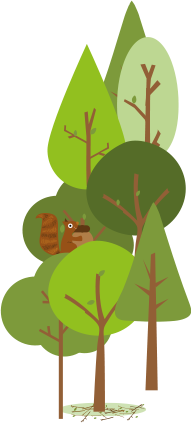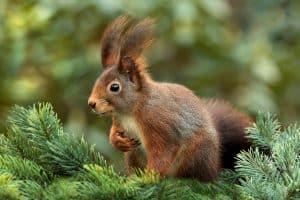

Wild Encounters#5: Sciurus vulgaris
28th November 2017

Red squirrels are native to Britain, but now endangered due to the spread of the American grey squirrels introduced here in Victorian times. When greys colonise an area they quickly wipe out our native reds, not because they fight them directly, but because they compete for resources and spread a pox which is deadly to red squirrels. Wild red squirrels have all but disappeared from most of England but partnerships like Red Squirrels Northern England are working hard to monitor and maintain pockets of red squirrel resistance in the Cumbria, Northumbria and Merseyside. Thanks to the dedication of conservationists and volunteers, Snaizeholme is one of several sites in the north of England where red squirrels have a stronghold, at the frontier between Scotland’s reds and England’s greys.

When we got to Mirk Pot farmhouse, a red squirrel sat obligingly on a gate post, much to everyone’s delight. The walk took us through dark conifer woodlands where squirrels could be seen cavorting in and under the trees. After a mile or so the path opened out in a viewing area where we could watch about a dozen squirrels who didn’t seem to be shy at all. The Kemp family who farm here planted the conifers about 40 years ago with the intention of growing Christmas trees, but were thrilled when a pair of red squirrels moved in. They wanted to share the experience with others so worked with the Yorkshire Dales National Park to create a management plan and a visitor viewing area. The woodland is managed for the squirrels and special squirrel feeders ensure their natural food supply does not run short and visitors have a good chance of spotting these wonderful creatures. Despite the cold, we watched them for ages, their energy and playfulness adding enchantment, colour and warmth to a grey autumn day.
(To visit Snaizeholme book in advance with the Dales Countryside Museum, who ring through and let the landowners know to expect you. On arrival post £5 through the farmhouse letter box. The Little White Bus service runs from Hawes to Snaizeholme between April – October or by arrangement)

